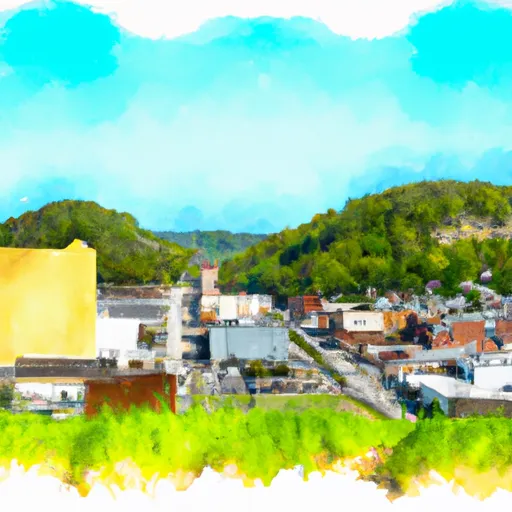-
 Snoflo Premium
Snoflo Premium
Get unlimited access to all our content
With no Ad interruptions! - Start Your Free Trial Login with existing account
Morehead
Eden Index
Climate
8.2
•
Recreation
4.8
•
Community
2.0
•
Safeguard
5.5/10

Located in Rowan County, Morehead is a charming city in northeastern Kentucky. The region experiences a humid subtropical climate, characterized by hot summers and cool winters. Average temperatures range from the mid-80s°F (30s°C) in summer to the mid-30s°F (1-2°C) in winter. Precipitation is fairly evenly distributed throughout the year, with occasional snowfall during the colder months.
Morehead benefits from its proximity to Cave Run Lake, a large reservoir known for its excellent fishing opportunities. The lake is home to various fish species, including muskellunge, largemouth bass, and bluegill, attracting anglers from near and far. Additionally, Cave Run Lake offers opportunities for boating, water skiing, and swimming. The surrounding Daniel Boone National Forest provides ample opportunities for hiking, camping, and wildlife viewing, with the Sheltowee Trace National Recreation Trail passing through the area.
In conclusion, Morehead, Kentucky boasts a humid subtropical climate, with warm summers and cool winters. The city's hydrology is enhanced by the presence of Cave Run Lake, which offers numerous outdoor recreation opportunities such as fishing, boating, and swimming. The nearby Daniel Boone National Forest adds to the region's appeal with its hiking trails, camping spots, and wildlife-rich areas.
What is the Eden Index?
The Snoflo Eden Index serves as a comprehensive rating system for regions, evaluating their desirability through a holistic assessment of climate health, outdoor recreation opportunities, and natural disaster risk, acknowledging the profound impact of these factors on livability and well-being.
Climate Health Indicator (CHI): 8.2
Morehead receives approximately
1182mm of rain per year,
with humidity levels near 84%
and air temperatures averaging around
13°C.
Morehead has a plant hardyness factor of
6, meaning
plants and agriculture in this region thrive during a short period during spring and early summer. Most
plants will die off during the colder winter months.
By considering the ideal temperature range, reliable water supplies, clean air, and stable seasonal rain or snowpacks, the Climate Health Indicator (CHI) underscores the significance of a healthy climate as the foundation for quality living.
A healthy climate is paramount for ensuring a high quality of life and livability in a region, fostering both physical well-being and environmental harmony. This can be characterized by ideal temperatures, reliable access to water supplies, clean air, and consistent seasonal rain or snowpacks.
Weather Forecast
Streamflow Conditions
Licking
Area Rivers
Licking
Snowpack Depths
Licking
Reservoir Storage Capacity
Licking
Groundwater Levels
Recreational Opportunity Index (ROI): 4.8
The Recreational Opportunity Index (ROI) recognizes the value of outdoor recreational options, such as parks, hiking trails, camping sites, and fishing spots, while acknowledging that climate plays a pivotal role in ensuring the comfort and consistency of these experiences.
Access to outdoor recreational opportunities, encompassing activities such as parks, hiking, camping, and fishing, is crucial for overall well-being, and the climate plays a pivotal role in enabling and enhancing these experiences, ensuring that individuals can engage in nature-based activities comfortably and consistently.
Camping Areas
| Campground | Campsites | Reservations | Toilets | Showers | Elevation |
|---|---|---|---|---|---|
| Wilderness Road - Cumberland Gap National Park | 160 | 1,311 ft | |||
| Twin Knobs Rec Area | 623 | 773 ft | |||
| Trace Branch - Buckhorn Lake | 20 | 865 ft | |||
| Buckhorn Dam Rec Area - Buckhorn Lake | 33 | 740 ft | |||
| North Fork - DFWR | None | 734 ft | |||
| Paragon | 9 | 731 ft | |||
| Willie Begley Memorial RV Park | None | 954 ft | |||
| Clay Lick - DFWR | None | 740 ft | |||
| Zilpo Rec Area | 368 | 764 ft | |||
| Clear Creek Rec Area | 23 | 762 ft |
Nearby Ski Areas
Catastrophe Safeguard Index (CSI):
The Catastrophe Safeguard Index (CSI) recognizes that natural disaster risk, encompassing floods, fires, hurricanes, and tornadoes, can drastically affect safety and the overall appeal of an area.
The level of natural disaster risk in a region significantly affects safety and the overall livability, with climate change amplifying these risks by potentially increasing the frequency and intensity of events like floods, fires, hurricanes, and tornadoes, thereby posing substantial challenges to community resilience and well-being.
Community Resilience Indicator (CRI): 2.0
The Community Resilience Indicator (CRI) recognizes that education, healthcare, and socioeconomics are crucial to the well-being of a region. The CRI acknowledges the profound impact of these elements on residents' overall quality of life. By evaluating educational resources, healthcare accessibility, and economic inclusivity, the index captures the essential aspects that contribute to a thriving community, fostering resident satisfaction, equity, and social cohesion.

